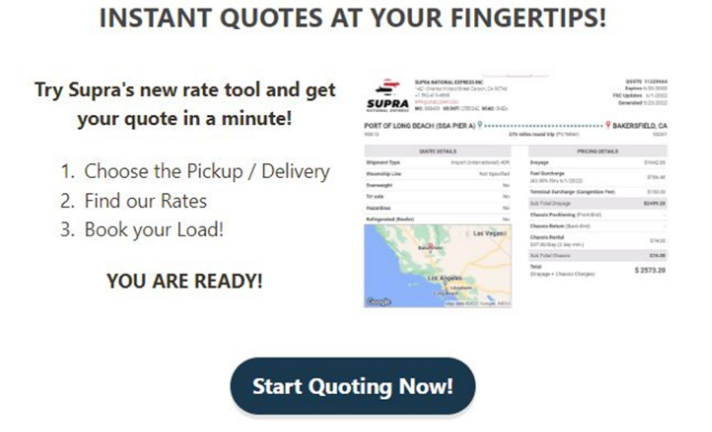With the e-commerce explosion in recent years, freight and transportation have been under intense pressure to fulfill ever-increasing customer expectations for shorter delivery times. Whole new logistics services have arisen to meet the demand for innovation. In response, more companies have pursued investments in new technology and logistics software. Global investment in supply chain technology has seen significant growth in recent years. It increased from $2 billion in 2011 to $52 billion in 2020. That’s more than a total combined investment of over $302 billion, according to Kearney. This investment increase has helped reduce barriers to entry for logistics IT systems, making them more accessible to small and medium-sized businesses.
Now, many companies can finally to reevaluate their freight management approach, focusing on shortening lead times and reducing inventories. In particular, there has been a growing interest in “demand-driven” logistics systems. But these systems can be confusing to the source. As a result, it’s important to know what to look for when vetting demand-driven freight platforms and systems and how focusing on these core features will improve your ROI.
Flexibility and Scalability.
A demand-driven system should handle multiple inventory types. Logistics IT systems must be flexible enough to pick up new locations and inventory items quickly. Yet, they must be robust enough to support timely and accurate data output across order management, distribution center operations and logistics management. Such systems should have the ability to ramp up performance while providing seamless cost control. Period.
User-friendly Interface.
The logistics systems of today must have a user-friendly, straightforward interface. Further, technology is only as good as its ease of use any function, such as:
- Inventory management.
- Replenishment.
- Capacity procurement.
- Fleet management.
- Yard management.
- Payment processing.
Choosing systems with a user-friendly interface and integration with the above makes it easier to reap the benefits of supply chain optimization.
Customization and Filters.
Customizing logistics systems to fit the individual needs of each business is essential. However, this doesn’t mean a total redesign of the system. Instead, it’s the ability to drill down into the specific processes that better suit the strategic goals and objectives of the company. Further, such functions are handy when integrated within your existing warehouse management system (WMS) or transportation management system (TMS).
Reporting Capabilities Are Another Core Function.
Logistics businesses’ ability to generate and track reports is crucial for staying up-to-date on performance. Without proper reporting within your transportation or warehouse management software, it would be difficult to correctly identify areas of improvement and progress. The same principle exists in almost any business process. Your systems should provide both on-demand and regular reporting capabilities.
Customer Support and Cybersecurity Features Are Crucial.
Customer support is the hallmark of all successful logistics systems. There will inevitably be times when problems arise, and problems within your systems could result in a loss of inventory control and trouble managing both the inbound and outbound flow of goods. Ensure the software vendor offers customer support if any questions or issues arise. Also, the system vendor should offer a way to obtain and respond to customer feedback. In turn, this builds a better customer experience for you as a software user and for your end users too!
Remember to Consider the Cost.
Cost is always an essential factor to consider when choosing a logistics system. Any supply chain tech system should provide value for the cost and cost savings through improved efficiency and accuracy across all resources.
Simplify Vetting and Selection of Logistic Systems With Tech by Supra
When vetting demand-driven logistics systems, it’s essential to consider the above factors to ensure that you choose a solution that meets your specific needs and can help improve your logistics operations. And don’t forget to consider uses of the system in reverse logistics as well! Stop wasting time trying to sort through the endless noise of system selection; choose Tech by Supra to make a difference in your network. Speak with an expert in logistics at Supra National Express trucking technology development to get started.

 Become A Partner Carrier
Become A Partner Carrier